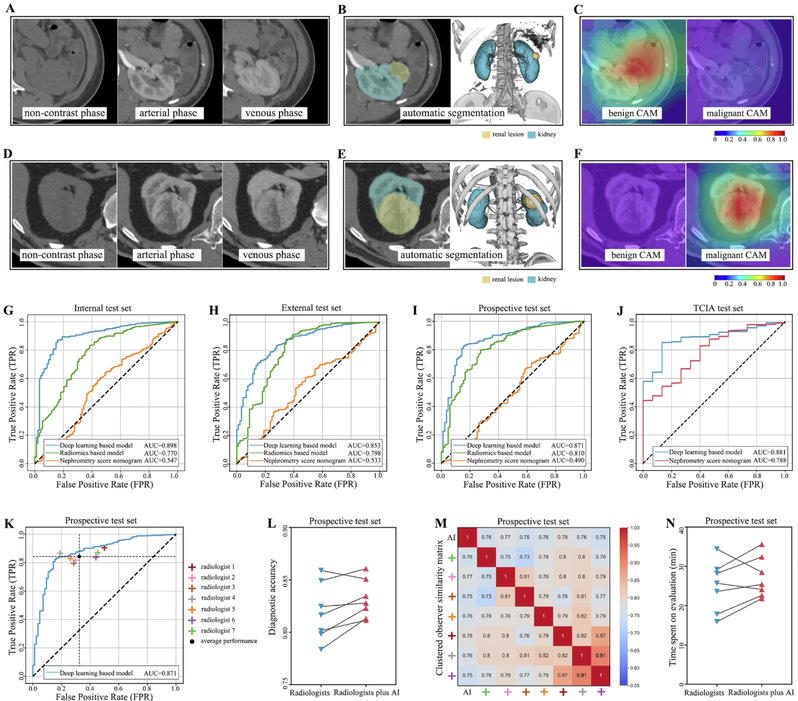

Artificial intelligence links CT images to pathologic features and survival outcomes of renal masses
Ying Xiong*, Linpeng Yao*, Jinglai Lin*, Jiaxi Yao*, Qi Bai*, Yuan Huang, Xue Zhang, Risheng Huang, Run Wang, Kang Wang, Yu Qi, Pingyi Zhu, Haoran Wang, Li Liu, Jianjun Zhou☨, Jianming Guo☨, Feng Chen☨, Chenchen Dai☨, Shuo Wang☨
Nature Communications (IF=14.7)
Abstract
Treatment decisions for an incidental renal mass are mostly made with pathologic uncertainty. Improving the diagnosis of benign renal masses and distinguishing aggressive cancers from indolent ones is key to better treatment selection. We analyze 13261 pre-operative computed computed tomography (CT) volumes of 4557 patients. Two multi-phase convolutional neural networks are developed to predict the malignancy and aggressiveness of renal masses. The first diagnostic model designed to predict the malignancy of renal masses achieves area under the curve (AUC) of 0.871 in the prospective test set. This model surpasses the average performance of seven seasoned radiologists. The second diagnostic model differentiating aggressive from indolent tumors has AUC of 0.783 in the prospective test set. Both models outperform corresponding radiomics models and the nephrometry score nomogram. Here we show that the deep learning models can non-invasively predict the likelihood of malignant and aggressive pathology of a renal mass based on preoperative multi-phase CT images.
